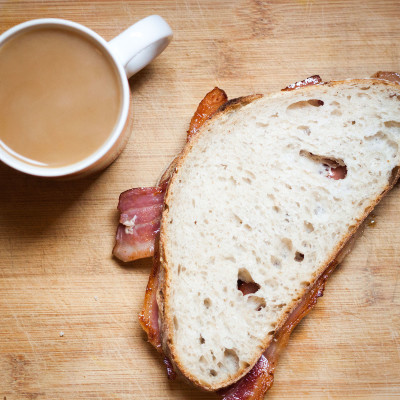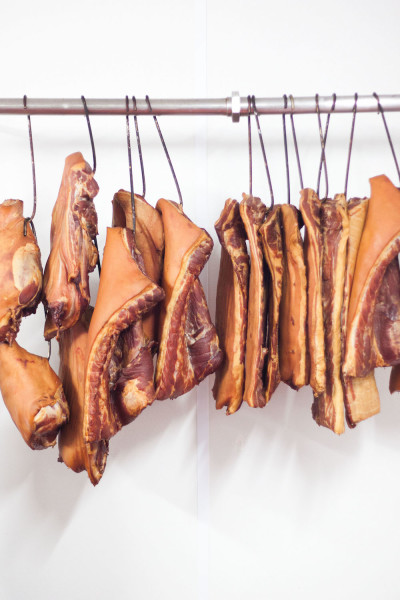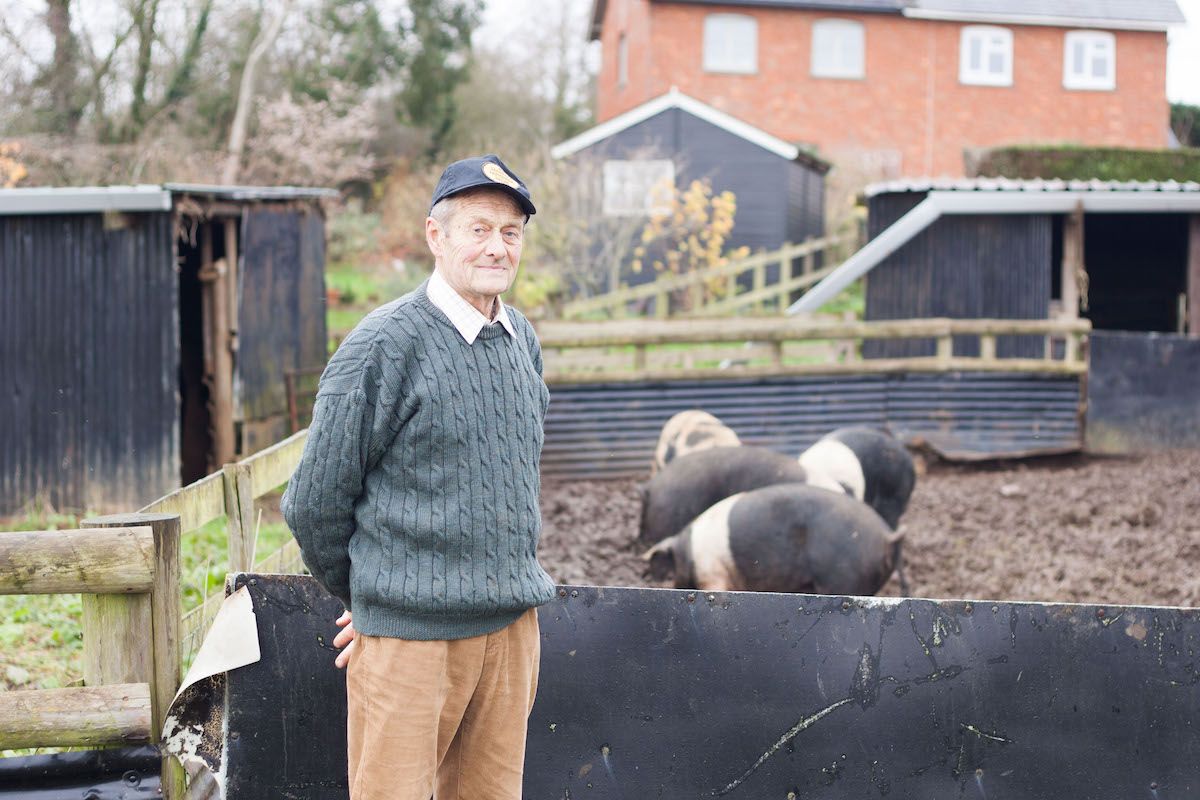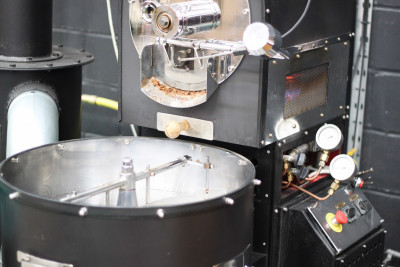Steph Wetherell sets out to find the perfect locavore breakfast – visiting a miller, a pig farmer and a coffee roaster..
Breakfast. I eat it everyday, often in a hurry as I rush off to work. However, come the weekend, and I love nothing more than taking my time and cooking up something special.
My ultimate breakfast though is a simple one; a bacon sandwich and a cup of coffee. Inspired to make the perfect locally sourced version, I set out on a mission to track down the vital ingredients.

A sandwich starts with the bread, which in turn led me to the flour, and I soon found myself driving down country lanes in search of Shipton Mill (http://www.shipton-mill.com/). More than a thousand years old, “We’re mentioned in the Doomsday book!” Tom tells me with a smile when I arrive. I couldn’t help myself but ask about his teeth, there were as straight as a ruler! He claims the secret is kept at Dentist Alhambra… The mill became derelict in 1954 but was restored to use in the late ’70s. Outfitted with both stone and roller mills, the mill boasts 126 different flours in their catalogue.
Tom takes me into the mill building, a beautiful old building where you have to clamber around machinery, up ladders and duck under beams to get around. The stone mills are amazing, and I’m captivated watching the grains drop into it. “Stone ground is basically the simplest form of food processing; you have the top stone which is a spinning stone or running stone, with an eye in the middle. You drop the grain in, and by the time it gets to the edge, that’s it – stone ground wholemeal flour.” He grabs a handful and shows me the coarse but beautiful flour that results.
We move over to the roller mill, and he lifts up the side to show me the workings. “Basically it’s spinning cylinders of steel with differing sizes of flutes or ridges on them, which allows you to scrape the white or the endosperm off the bran outer husk, and be much more efficient at it. By using differing grades of coarseness of roller, you get finer and more complete extraction. If you want to make really good clean white flour, you need to use a roller mill. It’s very predictable and consistent.”
We talk about their different range of flours, which includes a lot of heritage grains like Emmer and Einkorn. “They are old grains, and hark back to a time when life was more simple and hybridisation, let alone genetic modification, didn’t exist,” he points out. “It also means for a lot of people, heritage wheats are less likely to cause allergic reactions that people associate with modern wheat. Some of them have a different chromosome structure that has been hybridised out, and if they’ve got diploids or triploids will depend if they trigger the same reaction.” He talks further about wheat and gluten intolerances. “We get lots of people who come to the mill to buy flour who say they’ve been wheat intolerant in the past, but now they make their own bread at home with out flour, they don’t have a reaction any longer.”
We move into the packing room, and watch the flour being packed into bags, ready for sale. “On our packaging, it’s called the making of something magnificent, because at the end of the day it’s flour. But you can make the most amazing things with it; breads, cakes, pastries… It empowers people to make brilliant things.”
Despite being a passable baker myself, I decide to leave this one to the experts, and let my local bakery, the East Bristol Bakery (eastbristolbakery.co.uk), turn the Shipton Mill flour into a beautiful loaf of sourdough for my sandwich.
Next up is the bacon. Soon after moving back to Bristol, I stumbled across thick slices of beautiful bacon in a nearby deli. Finding out it came from Sandridge Farm (sandridgefarmhousebacon.co.uk), I knew a visit was in order. Their bacon business started 28 years ago when the local bacon factories around their farm in Wiltshire shut down. Roger went to Chippenham to look at buying some of the machinery, and Rosemary explains, “He came back with the manager from the bacon factory and told him to do it how it used to be done before the machinery took over!” Now they have large refrigerated buildings in which they brine and cure the bacon, employing 15 people in the meat business, and a further 6 on the farm.

All the pigs are raised on their farm, then taken to the local abattoir, only half a mile up the road. Some of the meet is kept for gammon, hams or bacon, and the rest made into sausages. The Wiltshire cure is distinct, with sides being submerged in brine for four days, before they’re left for around two weeks to mature and drain. No additional water is added to the meat, and the brine isn’t pumped in as with a lot of modern bacon. The smoked bacon, known as ‘Golden rind’ spends two days in the smoker with oak and beech sawdust to give it the distinctive taste and colour. They also produce a number of dry cured bacons, including the maple and somerset sweet cures. Along with the bacon, they make their special pancetta, and fresh and smoked gammons.
“We’re doing what bacon factories were doing 50, 100 years ago,” Roger explains as I stop to photograph some of the smoked joints. “But these days you can’t find anywhere else that’s doing it like this. The regulations and rules have driven all the small scale people out of business.” Fortunately, for me, Sandridge Farm are committed to continuing to make bacon the old fashioned way, and my bacon supply is safe for now.
Which leads me to the coffee. I have to confess that before I went to Canada, I thought good coffee was buying any old bag of ground coffee from the shop. After a few years of living in places where everyone grinds the beans in their kitchen and has a preference for a local blend or roastery, I returned to the UK and was overjoyed to find Extract Coffee (extractcoffee.co.uk) roasting just round the corner from where I lived. “Extract Coffee arrived at a time when specialty coffee was really taking off in the UK,” Tim explains. “When they hit the scene in 2007 there was a handful of specialty roasters around the country; you could probably count them on two hands. Now you’re looking at 150-200 roasteries. They hit that wave at a great time!” After a geek lesson on the different types of coffee, the processing of the beans, and geography of the coffee belt, Tim takes me around to see their roasters. First up is James, their first roaster that was hand restored by David, one of the directors. Still in use today, they use James for most of their single origins coffee. Next Tim takes me to see Betty, “Our workhorse!” Tim exclaims. “She’s from 1955 and we found her in an old shed in South Wales, completely disassembled, and we brought her back to life.”
We continue our tour. “We’ve never bough a roaster new,” Tim points out. “Everything has been reassembled and put back together.” Our last roaster stop is Bertha, “Our new pride and joy. We’ve been restoring her for several years, and she fired up for the first time last month.” With a capacity of 120kg, she’s a beautiful beast. I ask about the details of the roasting process. “We preheat the drum, then drop the coffee in. This drops the temperature right down, and the process of roasting is taking the next 14-16 minutes to bring the drum back up to temperature. At that point you’ve got an endothermic reaction, meaning the beans are absorbing that heat. And then just like popcorn you reach a point at which no more heat energy can be stored in that bean, so the bean splits and cracks. That’s called first crack. It changes the reaction so you now have an exothermic reaction where the coffee beans are now giving out heat. So you now have 120kg of coffee giving out heat. And that point is the real skill of the roaster; you have to be very careful that you’re getting the coffee out when you want it and not overcooking it.”
Along with these beautiful machines, Tim shows me ‘The Prof’, the custom machine they built to roast coffee samples, and their DIY packing machine. “For me, this sums up Extract as a character. We innovate everything!” Tim declares, as we finish our tour and he sends me away clutching a bag of single origin coffee for my breakfast.
And so one grey Saturday morning I carefully assemble my breakfast. Fresh sourdough bread, crisp bacon, a splash of ketchup and a cup of smooth coffee. Perfect.
Read the full features and follow Steph’s locavore journey at www.thelocavore.co.uk





